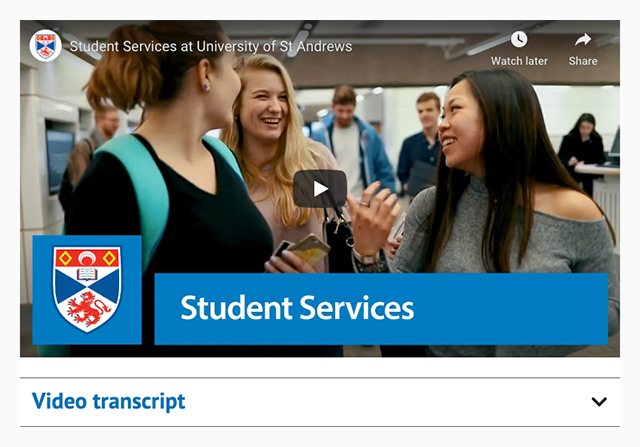Improving video accessibility
Recent updates to the digital pattern library include improved support and guidance for making embedded videos and audio more accessible.
Video content is more important than ever with 71% people watching more videos than they did a year ago, and video content is predicted to make up to 81% of internet traffic by 2021.
The recent improvements to accessibility regulations include specific rules related to video and audio content. In an article from June 2019 we demonstrated how to make videos accessible with closed captions and we have recently published further caption and transcript guidance to our digital standards. All new pre-recorded media, that is embedded on the University website, must be accessible through closed captioning. Further information on our approach to this can be found in the website’s accessibility statement.
YouTube is the dominant platform for video, with over five billion views every day, and it provides excellent support for transcripts and closed captioning. The added benefit of an enhanced privacy mode, that doesn’t use tracking cookies, made it a simple decision to use YouTube for all embedded videos on the University website. The University’s YouTube channel is maintained by the digital communications team.
Changes to the digital pattern library (DPL)
The DPL updates streamline the way YouTube videos and Soundcloud audio are embedded on a web page. We follow transcript best practice and place these on the same page and directly underneath the corresponding embedded media. YouTube videos must have closed captions included before they are allowed to be embedded on the University website, but we have gone further by including text transcripts for all media that has dialogue.

Transcripts are placed within a collapsible panel to reduce visual clutter and initial scroll depth. When the transcript is visible this may introduce a substantial new vertical element on the page and for this reason media no longer appears directly beside other types of content.
Other video resources
Video design guidelines – Information for staff and external production companies who intend to create videos using the University of St Andrews brand.